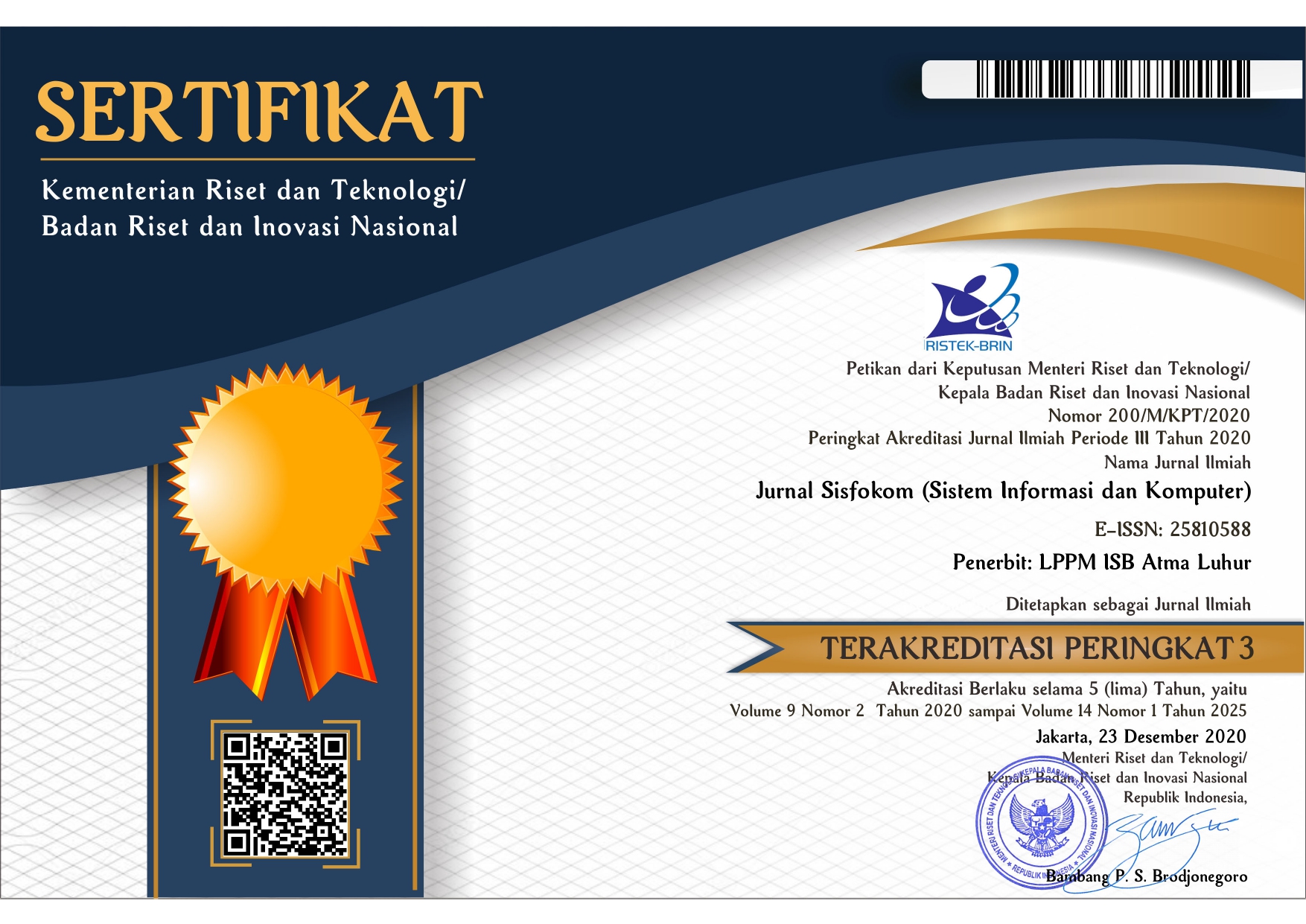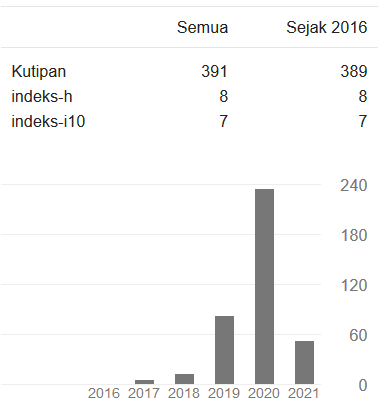Comparison Between Usability and User Acceptance Testing on Educational Game Assessment
DOI:
https://doi.org/10.32736/sisfokom.v13i2.2099Keywords:
Usability, SUS, UAT, GameAbstract
User Acceptance Testing (UAT) and Usability Testing are two methods commonly used in evaluating software or systems. UAT is concerned with overall system acceptance, while Usability Testing is specifically aimed at assessing the user's experience in interacting with the product. These two testing methods play an important role in ensuring the quality and user satisfaction of software and systems. Including being used to evaluate the Little Panda's Forest Animals game against 106 respondents consisting of two different campuses. The purpose of this research is to see the comparison between Usability Testing and User Acceptance Testing. With the research stages of literature review, questionnaire creation, data collection, data processing, and conclusions. The results of data processing show that there are differences in results where Usability Testing gets a lower score than User Acceptance Testing. Usability Testing results received an assessment range of 65 - 84 with the Usability statement being acceptable to users, while User Acceptance Testing received a range of 81% - 100% with the score interpretation criteria being very good.References
A. Setiawan, H. Praherdhiono, and S. Suthoni, “Penggunaan Game Edukasi Digital Sebagai Sarana Pembelajaran Anak Usia Dini,” JINOTEP (Jurnal Inov. dan Teknol. Pembelajaran) Kaji. dan Ris. dalam Teknol. Pembelajaran, vol. 6, no. 1, pp. 39–44, 2019, doi: 10.17977/um031v6i12019p039.
L. Lovita and T. H. Rochadiani, “Pengembangan Game Edukasi Visual Novel Mata Pelajaran Pendidikan Budi Pekerti Di SD Setia Bhakti,” Techno.Com, vol. 22, no. 2, pp. 323–335, 2023, doi: 10.33633/tc.v22i2.7978.
M. Ni’maturahmah and . Rizky, “Dancer vs Non Dancer: Korelasi Kontroler Terhadap Game Experience Pada Rhythm Game,” Techno.Com, vol. 21, no. 4, pp. 957–967, 2022, doi: 10.33633/tc.v21i4.6950.
J. F. Andry, K. Christianto, and F. R. Wilujeng, “Using Webqual 4.0 and Importance Performance Analysis to Evaluate E-Commerce Website,” J. Inf. Syst. Eng. Bus. Intell., vol. 5, no. 1, p. 23, 2019, doi: 10.20473/jisebi.5.1.23-31.
R. A. Nugraha, D. Andriyanto, D. Riana, and S. N. Khasanah, “Analysis of Factors Affecting Quality of corona.jatengprov.go.id Website towards User Satisfaction using Webqual 4.0 Method,” J. Phys. Conf. Ser., vol. 1641, no. 1, pp. 0–6, 2020, doi: 10.1088/1742-6596/1641/1/012066.
A. Sidik, “Penggunaan System Usability Scale (SUS) Sebagai Evaluasi Website Berita Mobile,” Technol. J. Ilm., vol. 9, no. 2, p. 83, 2018, doi: 10.31602/tji.v9i2.1371.
N. Huda, F. Habrizons, A. Satriawan, M. Iranda, and T. Pramuda, “Analisis Usability Testing Menggunakan Metode SUS (System Usability Scale) Terhadap Kepuasan Pengguna Aplikasi Shopee,” Simkom, vol. 8, no. 2, pp. 208–220, 2023, doi: 10.51717/simkom.v8i2.158.
N. Aini, S. A. Wicaksono, and I. Arwani, “Pembangunan Sistem Informasi Perpustakaan Berbasis Web menggunakan Metode Rapid Application Development (RAD) (Studi pada : SMK Negeri 11 Malang),” J. Pengemb. Teknol. Inf. dan Ilmu Komput., vol. 3, no. 9, pp. 8647–8655, 2019.
Sambas and Ipan Ripai, “IMPLEMENTASI DAN USER ACCEPTANCE TEST (UAT) APLIKASI INTEGRATED LIBRARY SYSTEM (INLIS Lite) DI MTs NEGERI 7 KUNINGAN,” ICT Learn., vol. 7, no. 1, 2022, doi: 10.33222/ictlearning.v6i1.2306.
V. M. Anjasmara and A. Hadi Sumitro, “Pengembangan Sistem Informasi Masjid Darul Arham Menggunakan Metode V-Model dan UAT (User Acceptance Testing),” Inf. Syst. Educ. Prof. J. Inf. Syst., vol. 8, no. 1, p. 47, 2023, doi: 10.51211/isbi.v8i1.2443.
S. Syarif, T. Hasanuddin, and M. Hasnawi, “Perancangan Game Puzzle Labirin menggunakan Metode Game Development Life Cycle (GDLC) berbasis Unreal Engine,” Bul. Sist. Inf. dan Teknol. Islam, vol. 3, no. 1, pp. 34–41, 2022, doi: 10.33096/busiti.v3i1.582.
A. R. Bahtiar and M. A. Gustalika, “Penerapan Metode System Usability Scale dalam Pengujian Rancangan Mobile Apps Gamification Tari Rakyat di Indonesia,” J. Media Inform. Budidarma, vol. 6, no. 1, p. 491, 2022, doi: 10.30865/mib.v6i1.3510.
M. R. S. Sanjaya, A. Saputra, and D. Kurniawan, “Penerapan Metode System Usability Scale (Sus) Perangkat Lunak Daftar Hadir Di Pondok Pesantren Miftahul Jannah Berbasis Website,” J. Komput. Terap., vol. 7, no. 1, pp. 120–132, 2021, doi: 10.35143/jkt.v7i1.4578.
R. Suman and S. Sahibuddin, “User Acceptance Testing in Mobile Health Applications,” pp. 145–149, 2019, doi: 10.1145/3322645.3322670.
J. Elektornik, S. Tinggi, and I. Ekonomi, “ejournal.stiegalileo.ac.id 30,” pp. 30–38, 2018.
S. D. Purnamasari and F. Syakti, “Implementasi Usability Testing dalam Evaluasi Website Sekolah,” J. Sisfokom (Sistem Inf. dan Komputer), vol. 9, no. 3, pp. 420–426, 2020, doi: 10.32736/sisfokom.v9i3.1000.
A. Saputra, “Penerapan Usability pada Aplikasi PENTAS Dengan Menggunakan Metode System Usability Scale (SUS),” JTIM J. Teknol. Inf. dan Multimed., vol. 1, no. 3, pp. 206–212, 2019, doi: 10.35746/jtim.v1i3.50.
J. Abraham and I. E. Ismail, “Unit Testing dan User Acceptance Testing pada Sistem Informasi Pelayan Kategorial Pelayanan Anak,” Repos. PNJ, 2021.
A. W. Soejono, A. Setyanto, and A. F. Sofyan, “Evaluasi Usability Website UNRIYO Menggunakan System Usability Scale (Studi Kasus: Website UNRIYO),” Respati, vol. 13, no. 1, pp. 29–37, 2018, doi: 10.35842/jtir.v13i1.213.
I. Wahyudi and F. Alameka, “Analisis Blackbox Testing Dan User Acceptance Testing Terhadap Sistem Informasi Solusimedsosku,” J. Teknosains Kodepena |, vol. 04, no. 01, pp. 1–9, 2023.
Downloads
Additional Files
Published
Issue
Section
License
The copyright of the article that accepted for publication shall be assigned to Jurnal Sisfokom (Sistem Informasi dan Komputer) and LPPM ISB Atma Luhur as the publisher of the journal. Copyright includes the right to reproduce and deliver the article in all form and media, including reprints, photographs, microfilms, and any other similar reproductions, as well as translations.
Jurnal Sisfokom (Sistem Informasi dan Komputer), LPPM ISB Atma Luhur, and the Editors make every effort to ensure that no wrong or misleading data, opinions or statements be published in the journal. In any way, the contents of the articles and advertisements published in Jurnal Sisfokom (Sistem Informasi dan Komputer) are the sole and exclusive responsibility of their respective authors.
Jurnal Sisfokom (Sistem Informasi dan Komputer) has full publishing rights to the published articles. Authors are allowed to distribute articles that have been published by sharing the link or DOI of the article. Authors are allowed to use their articles for legal purposes deemed necessary without the written permission of the journal with the initial publication notification from the Jurnal Sisfokom (Sistem Informasi dan Komputer).
The Copyright Transfer Form can be downloaded [Copyright Transfer Form Jurnal Sisfokom (Sistem Informasi dan Komputer).
This agreement is to be signed by at least one of the authors who have obtained the assent of the co-author(s). After submission of this agreement signed by the corresponding author, changes of authorship or in the order of the authors listed will not be accepted. The copyright form should be signed originally, and send it to the Editorial in the form of scanned document to sisfokom@atmaluhur.ac.id.









